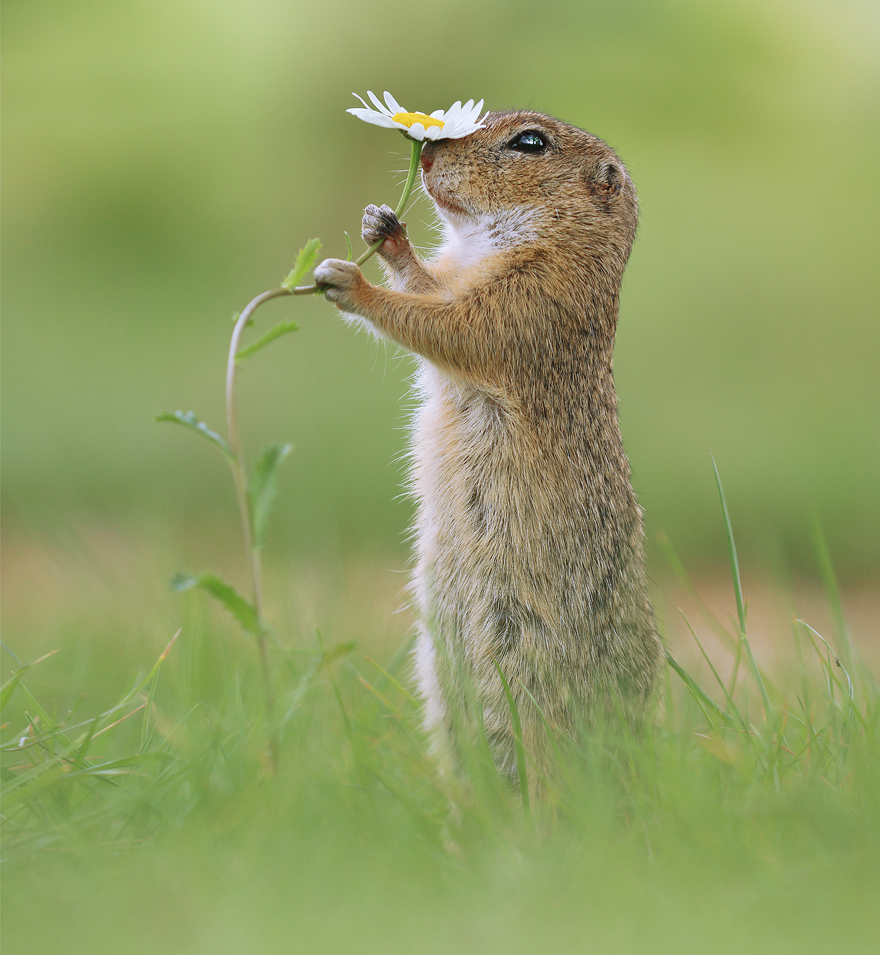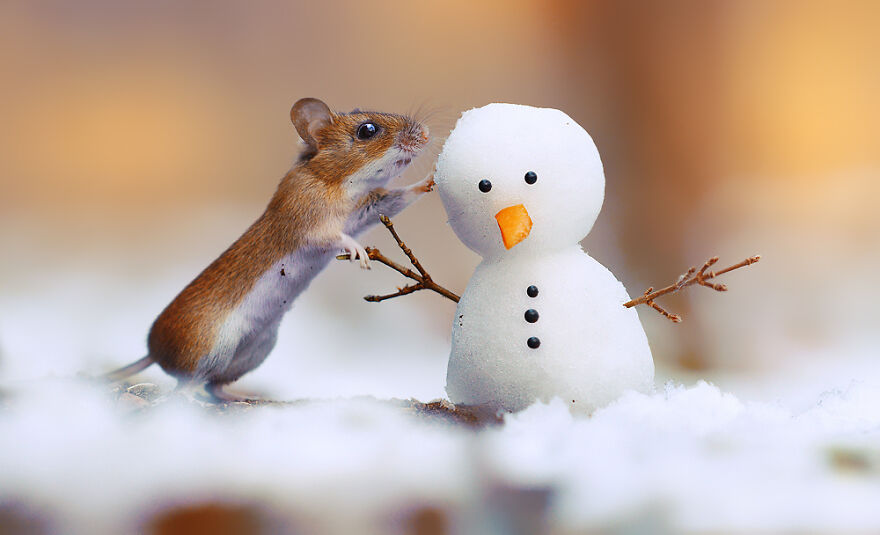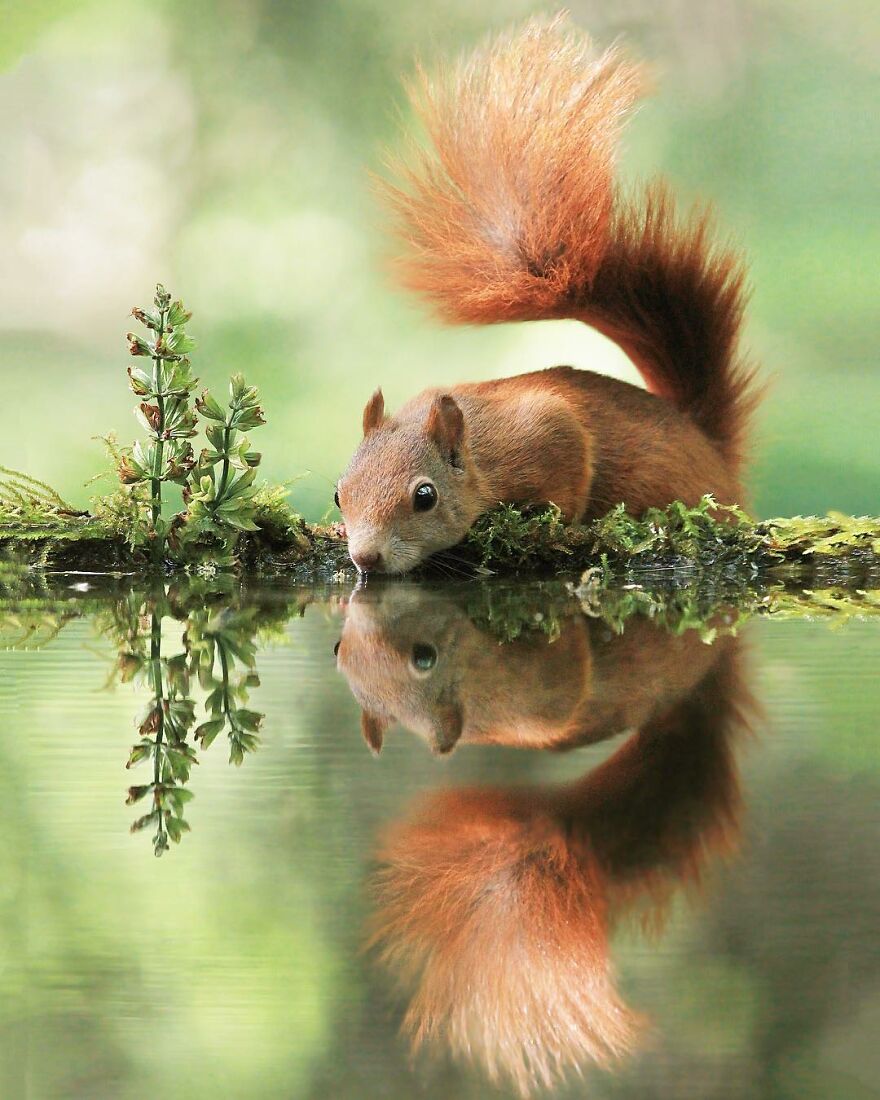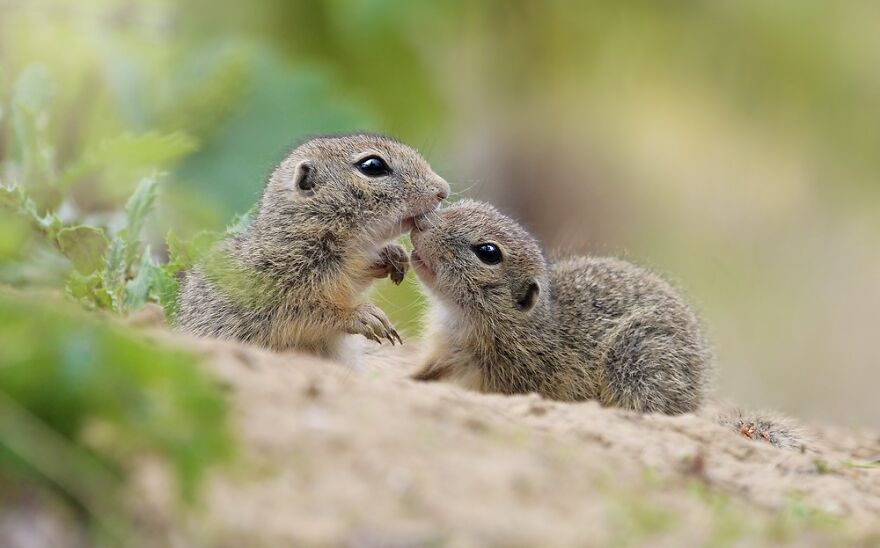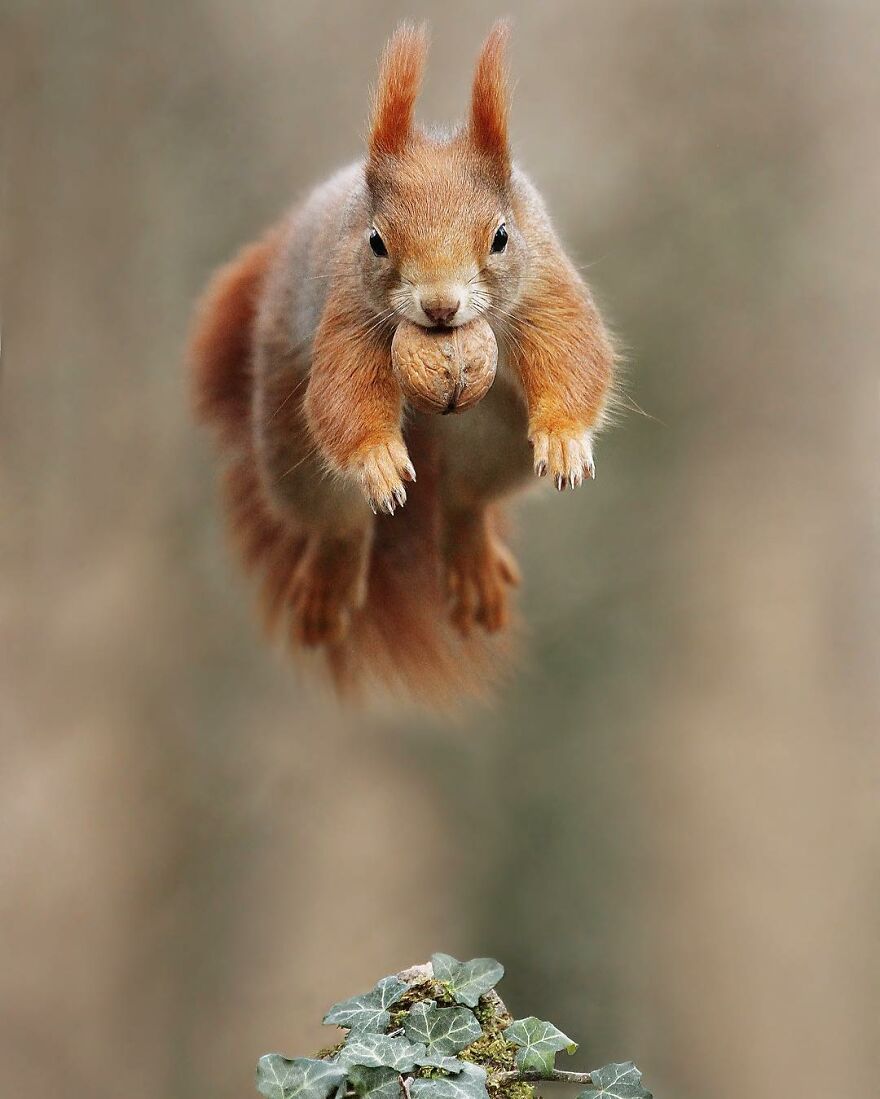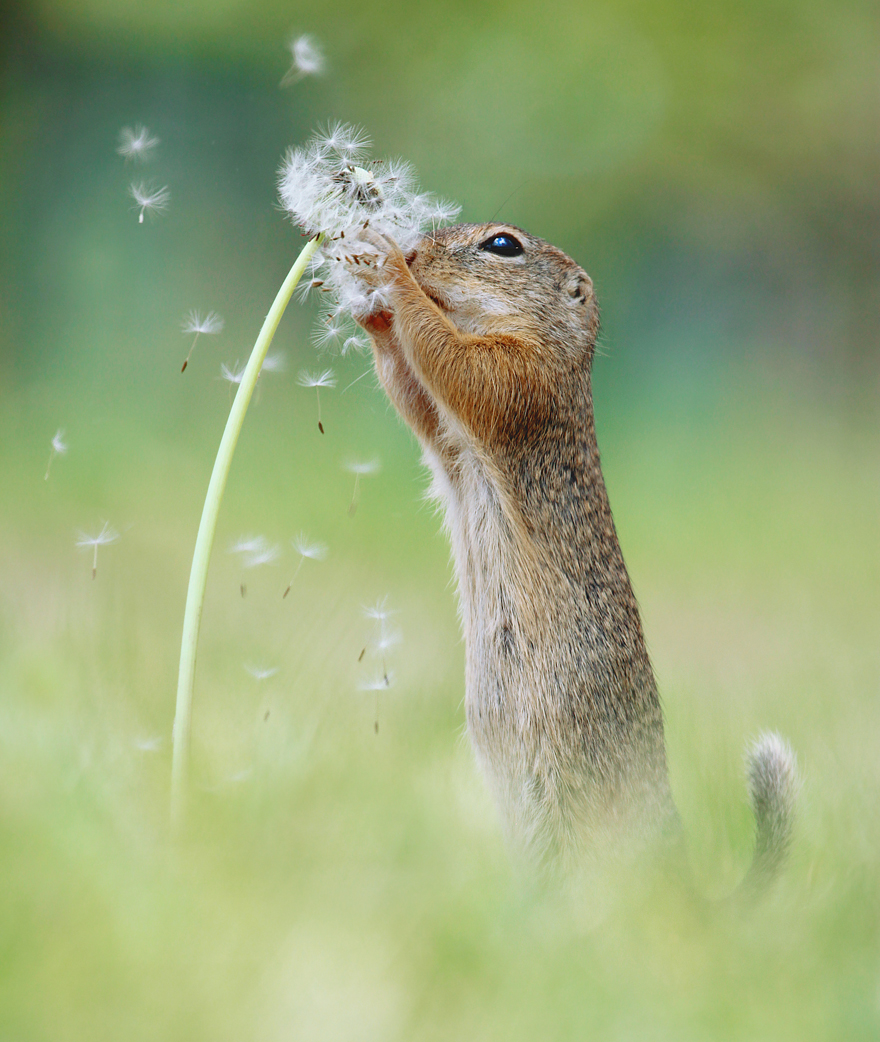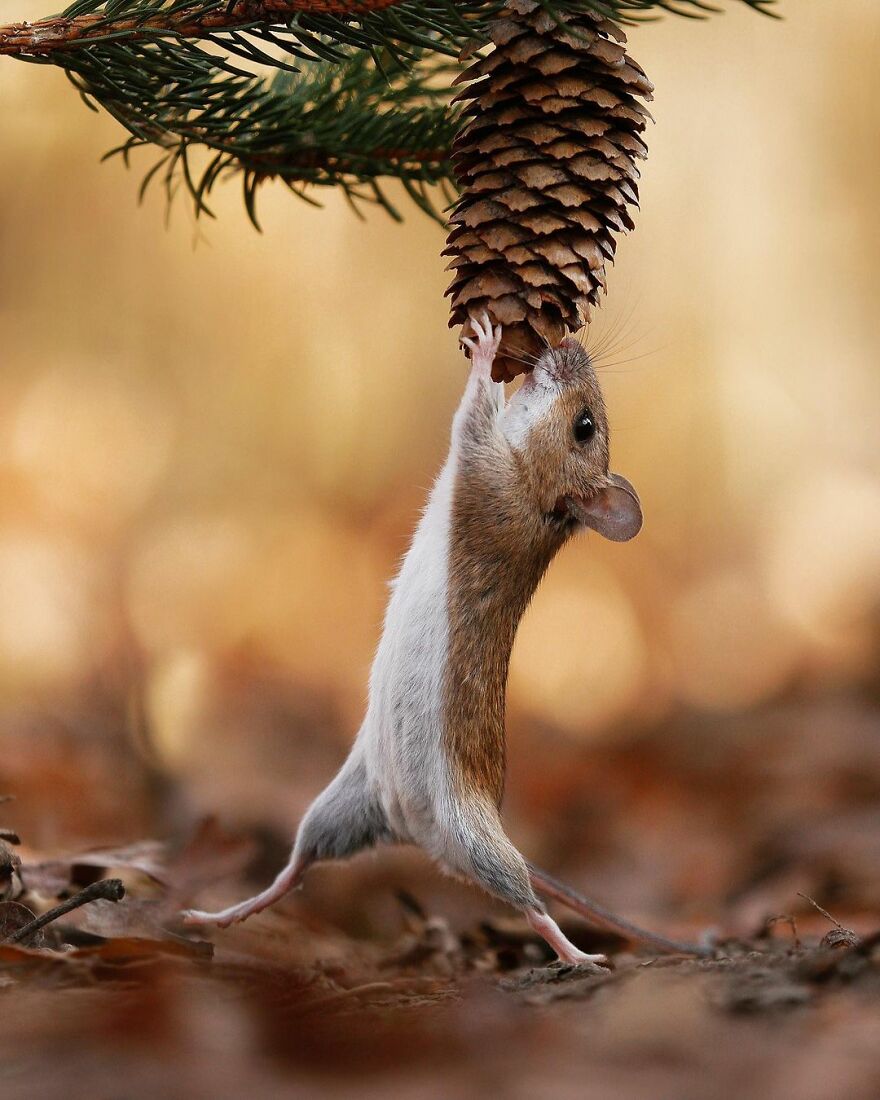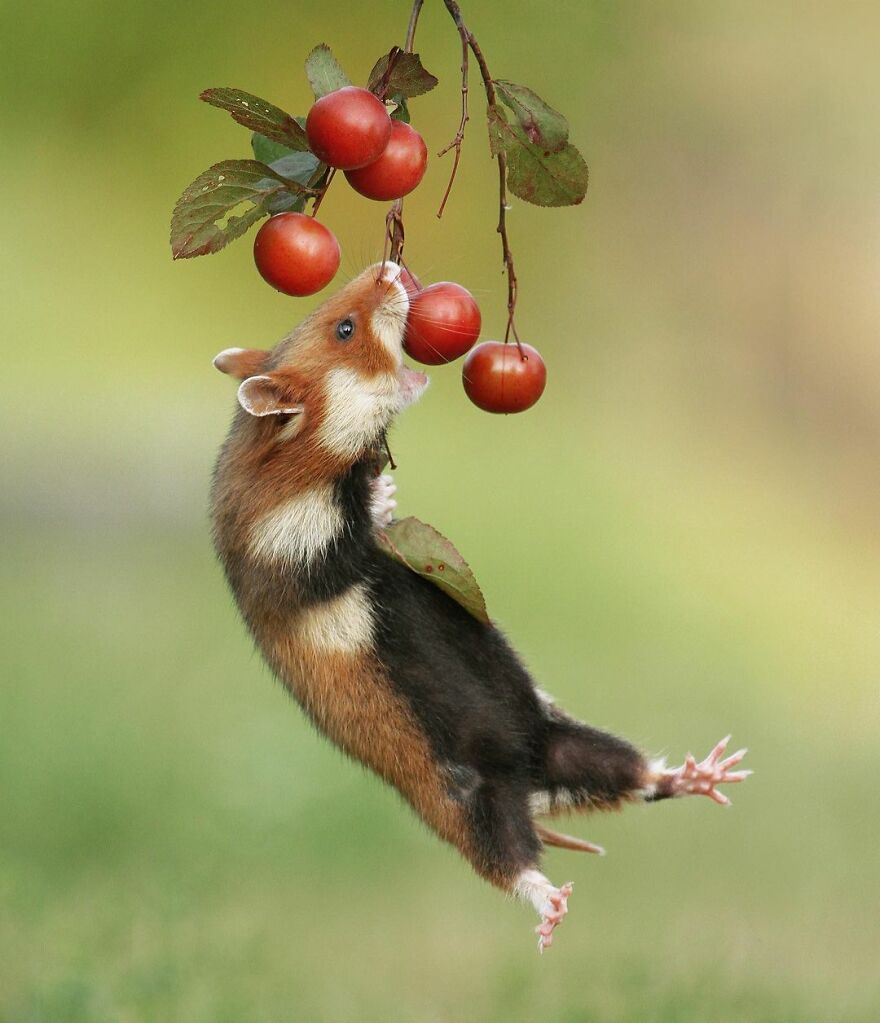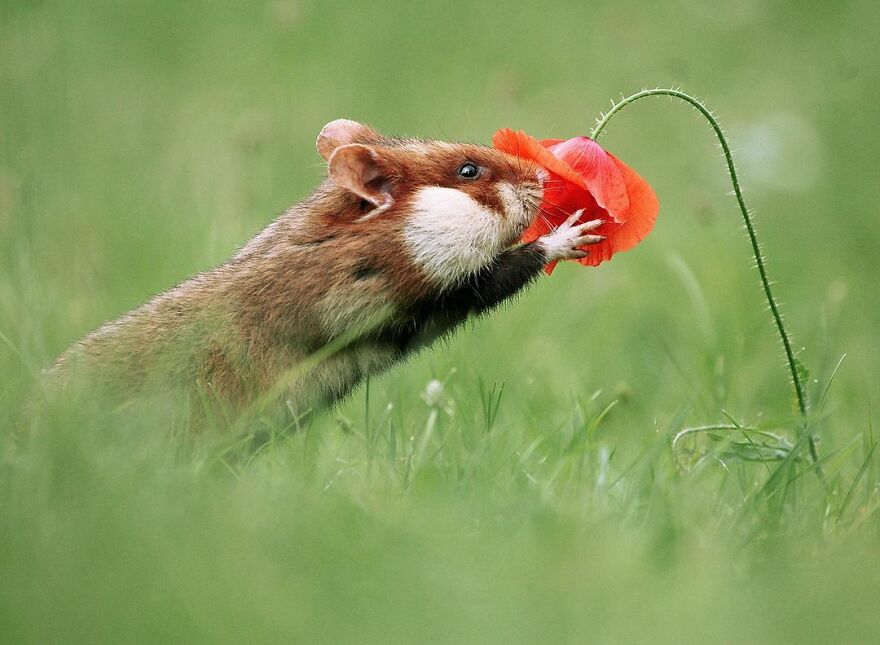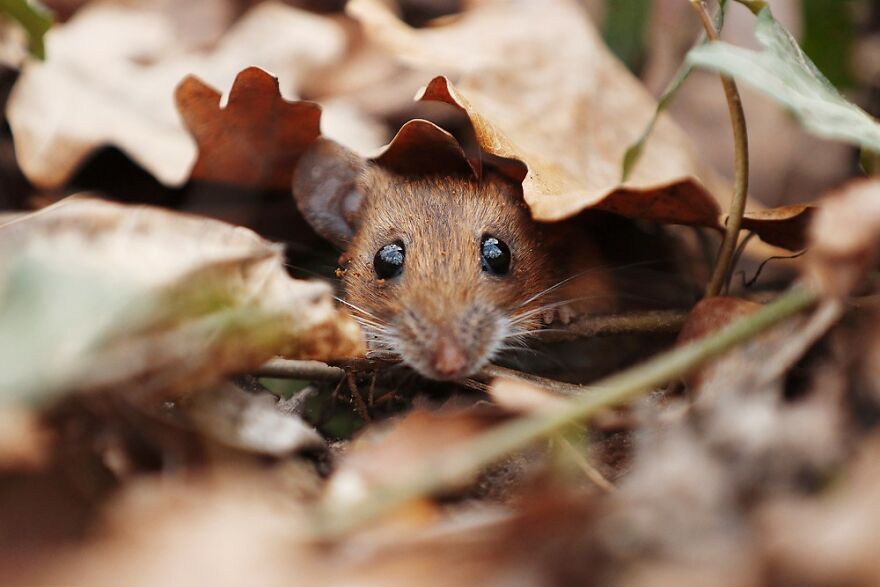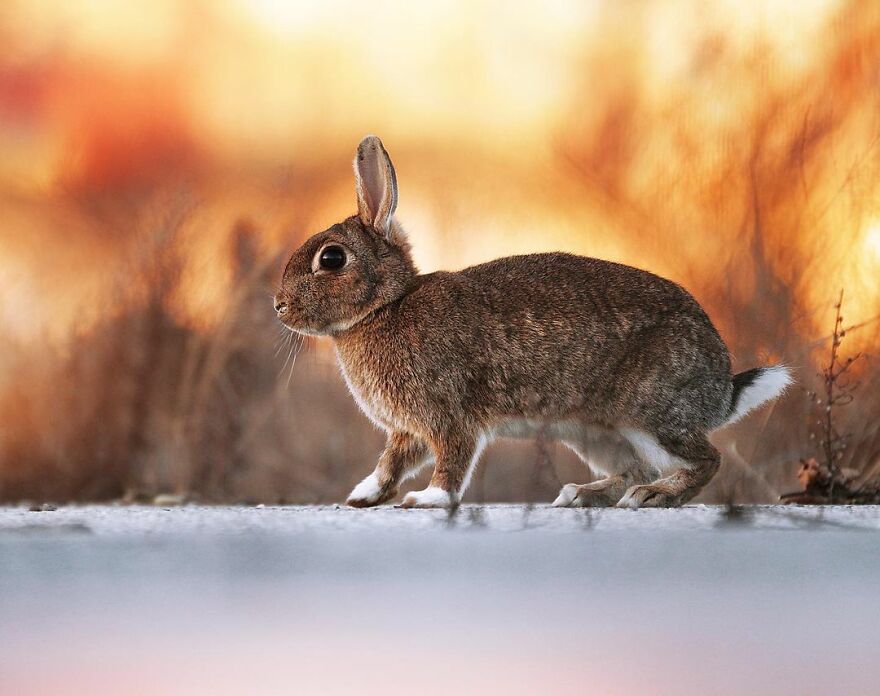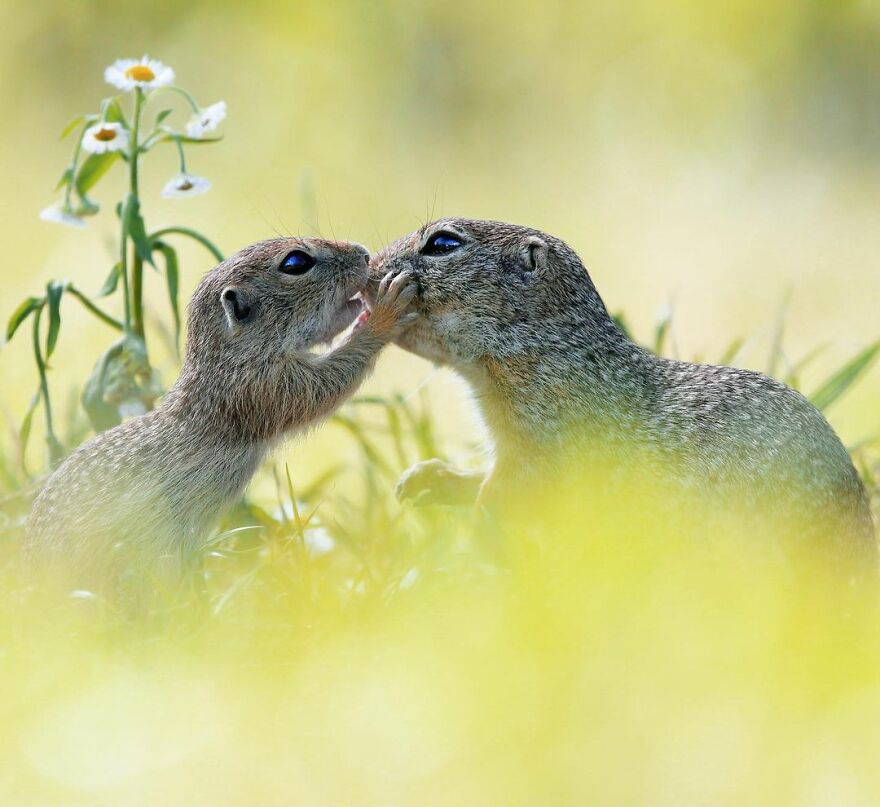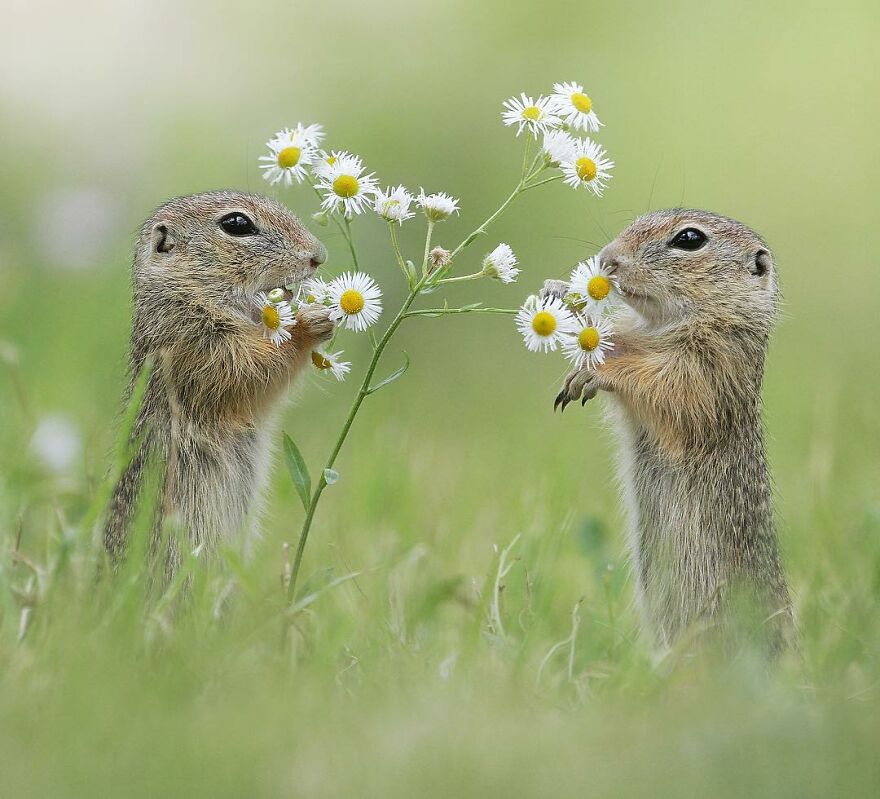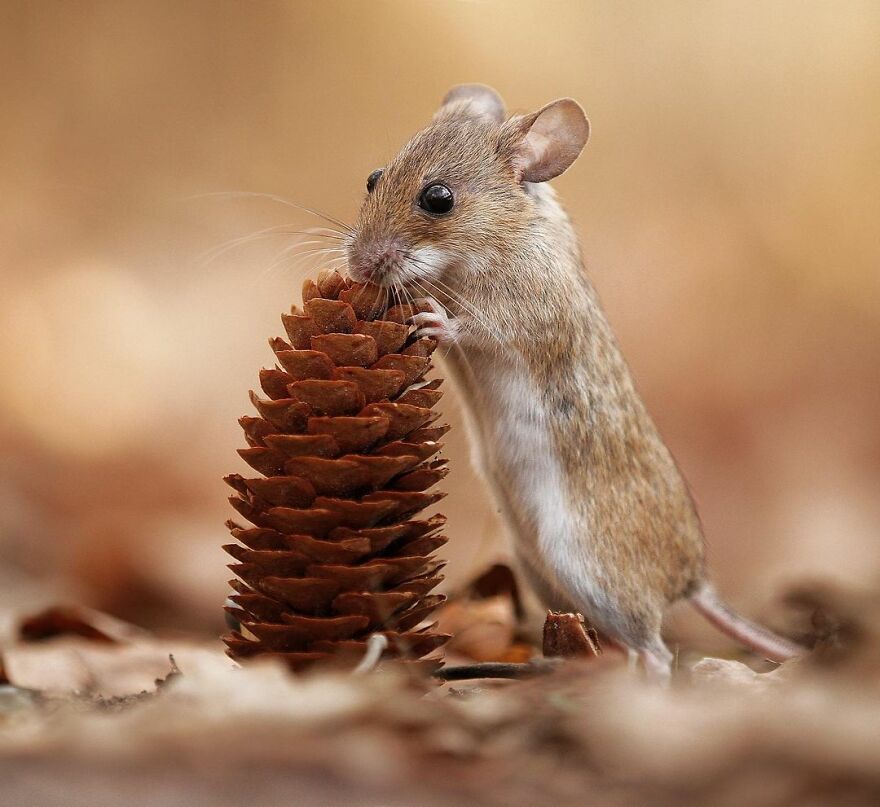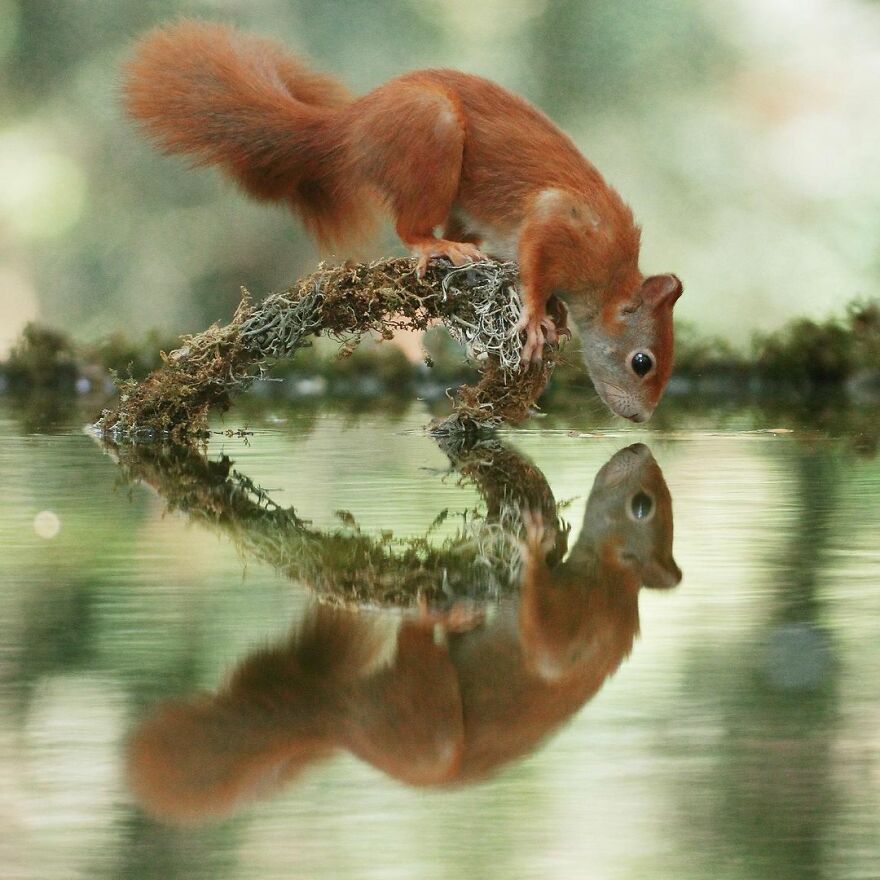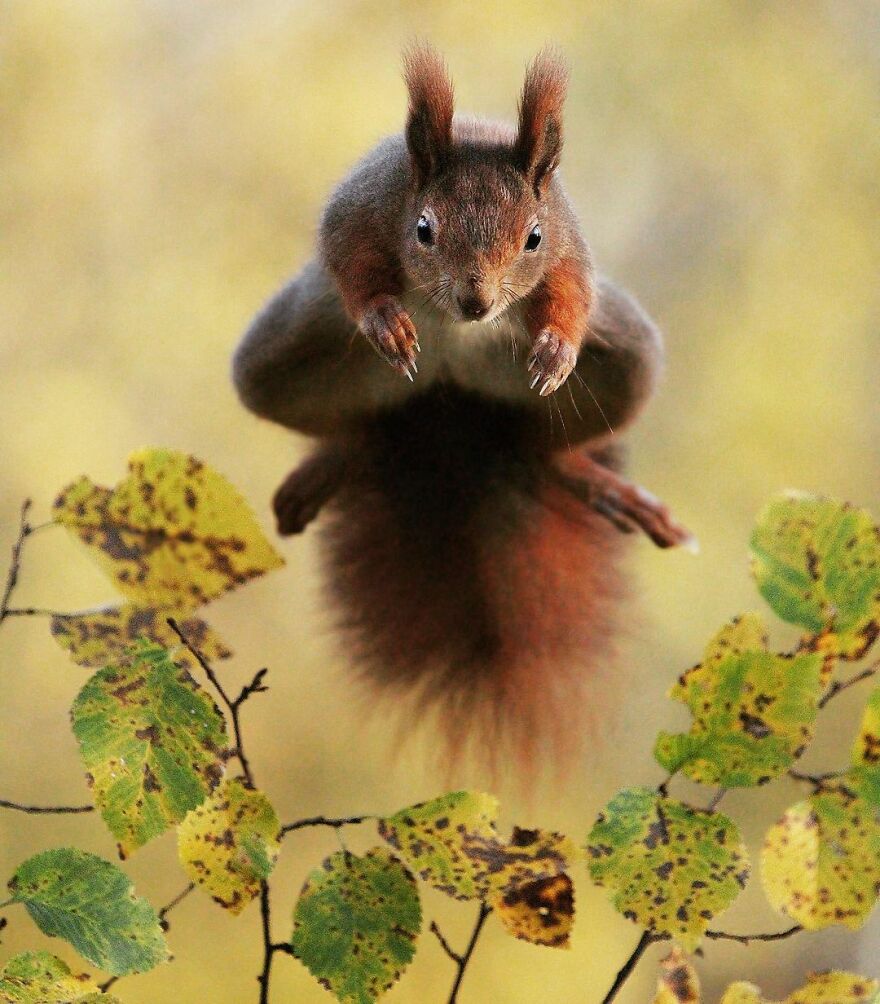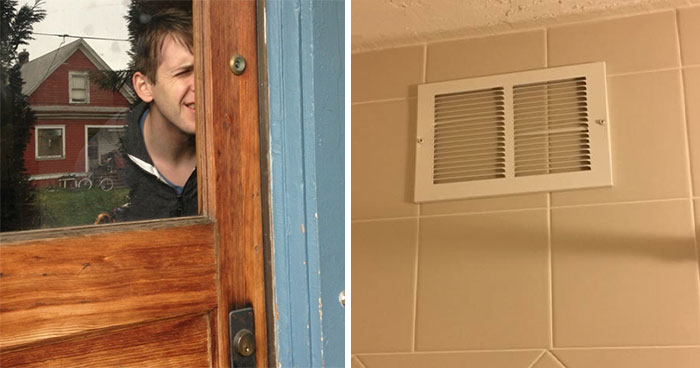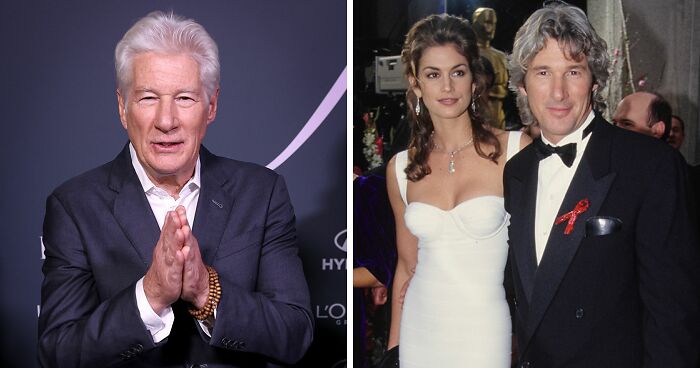
Award-Winning Photographer’s Work Shows What Happens In Nature When The Animals Are Alone And At Peace (30 New Pics)
Interview With AuthorJulian Rad is a 29-year-old Austrian award-winning wildlife photographer who captures the most adorable shots of squirrels, rabbits, wood mice, hamsters and other small animals in their natural habitat. I came across Julian’s work on Instagram, where he has already over 100,000 followers.
It's easy to miss the magical moments in nature, especially the small worlds of the tiniest critters. That's why wildlife photographers like Julian make it their mission to capture extraordinary shots of these little animals in nature. Through skill, patience, and precision, Julian’s photographs show these adorable creatures in splendid detail while bringing to life rare and unique moments.
Wildlife photography requires a lot of patience and Julian must have the patience of a saint, as it seems, as he probably wouldn’t mind sitting still in nature for hours to capture those wonderful pictures. We, humans, live in our own world, a hectic world full of distractions, mostly apart from wild animals and often forget that we share this beautiful planet with precious animals.
Photographers like Julian Rad remind us that we are not the only species around and let’s be honest, there’s nothing like cute animal pictures to clean the soul after reading news about Covid and corrupt politicians.] If you missed my first post of Julian Rad's works, you can check them out here. The animals and the photos are as great as these ones, so I really recommend it.
More info: Instagram | Facebook
This post may include affiliate links.
deep inhale....AWWWWWWWWWWWWWWWWWWWWWWWWWWWWWWWWWWWWWWWWWWWWWWWWWWWWWWWWWWWWWWWWWWWWWWWWWWWWWWWWWWWWWWWWWWWWWWWWWWWWWWWWWWWWWWWWWWWWWWWWWWWWWWWWWWWWWWWWWWWWWWWWWWWWWWWWWWWWWWWWWWWWWWWWWWWWWWWWWWWWWWWWWWWWWWWWWWWWWWWWWWWWWWWWWWWWWWWWWWWWWWWWWWWWWWWWWWWWWWWWWWWWWWWWWWWWWWWWWWWWWWWWWWWWWWWWWWWWWWWWWWWWWWWWWWWWWWWWWWWWWWWWWWWWWWWWWWWWWWWWWWWWWWWWWWWWWWWWWWWWWWWWWWWWWWWWWWWWWWWWWWWWWWWWWWWWWWWWWWWWWWWWWWWWWWWWWWWWWWWWWWWWWWWWWWWWWWWWWWWWWWWWWWWWWWWWWWWWWWWWWWWWWWWWWWWWWWWWWWWWWWWWWWWWWWWWWWWWWWWWWWWWWWWWWWWWWWWWWWWWWWWWWWWWWWWWWWWWWWWWWWWWWWWWWWWWWWWWWWWWWWW!
Julian Rad has given an exclusive in-depth interview to Bored Panda. Here's what he had to say about his wildlife photography. "Taking images of wild animals always requires a great amount of patience and time, because you never can predict when the animal is coming near to you or if it will be around at all. I have spent countless hours sitting in my photo-hide to photograph many different wild animal species and one thing that I’ve learned over the years is: Be patient and do not chase the animals, let them come to you. That is exactly why nature photography is so challenging: you need empathy, knowledge of species, endurance, and a pinch of luck."
That was the day Chloe discovered the hallucinogenic properties of clover
Here are the award-winning photographer's proudest achievements, according to him. "Back in 2015, I had the honor to win the Comedy Wildlife Photography Awards. The competition itself was founded by Joynson-Hicks and was established with the goal of promoting the conservation of wildlife. But one thing that I am really proud of is being able to get so close to all those wonderful animals and that they trust me; I absolutely don’t take this for granted."
Julian has given some extremely useful tips to those that want to try doing what he does, namely capturing awesome photos of wildlife. "Try to focus on an animal species which you can find near you. Maybe you can find some roe deer in a field, a fox den, or some squirrels in the forest. Studying wild animals will probably require a lot of patience, but trust me, it will pay off in the end.
Also, image composition is quite important. It is the most powerful tool to attract viewers—there are a few image composition rules, such as the rule of thirds or the golden ratio, both of which are used by many photographers to create images that appeal to the eye and to create an interesting atmosphere. Over the years, you will develop a creative eye and it will become easier for you to approach in different situations."
"One thing I have to clarify: Taking images with expensive camera bodies and lenses will not automatically make you a great photographer! The only function of your camera is to capture a moment and to capture the image you have in your mind. It’s not the camera which takes good images, it’s the photographer. Your camera is just a tool that will help you realize your ideas.
Also, be at eye level with the animals. If you want to create an eye-catching perspective, always be sure to get at the same level as the animal, because being at eye level with the animals allows the viewer to get into their fascinating world."
He even shared one of the most memorable encounters with wildlife. "I was once bitten on the finger by a hamster when I was trying to stroke it on the head. The hamster probably thought my fingers were edible as I'd had an apple beforehand and there was apple juice left on my fingers. It was really painful as they have really long and sharp front teeth. Wild hamsters don’t have great eyesight, which has a lot to do with their nocturnal nature, which makes it quite easy to get close to them and photograph them—as long as you don’t make any loud noises."
She loves me, she loves me not...wait, let me start over.
Aww, I have some beautiful sweet rabbits and they do this same thing whenever they want to clean themselves
"Argh, the snow's not packed enough! Just gotta push his head down a little more and I think I got it..."
notice how the mousie always tryna get everything bigger then it, so cute ^^
these are so beautiful! i really love the ones with the red squirrel looking into its reflection, that squirrel is so pretty
these are so beautiful! i really love the ones with the red squirrel looking into its reflection, that squirrel is so pretty

 Dark Mode
Dark Mode 

 No fees, cancel anytime
No fees, cancel anytime 







